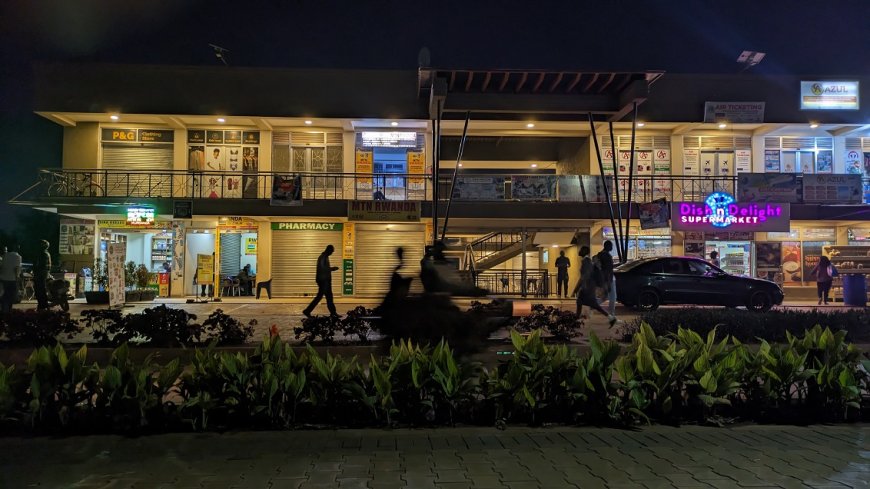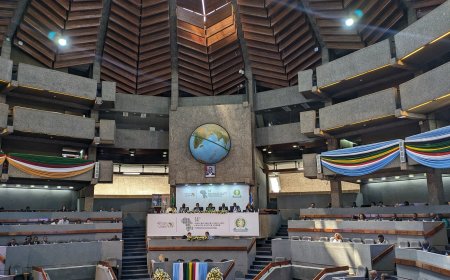Summary
- The African Continental Free Trade Area (AfCFTA) is poised to foster inclusivity, benefiting women, youth, and small enterprises across Africa, though existing African inequalities require careful navigation.
- Challenges, such as disparities between industrialised countries and Least Developed Countries (LDCs), are substantial but can be addressed with thoughtful planning and execution.
- While free trade agreements could inadvertently exacerbate inequalities, measured implementation of the AfCFTA and constant monitoring offer a pathway to mitigate this risk and promote equitable growth.
- Investment in human capital development, including educational facilities and vocational training centres, is essential to reducing existing skills gaps, both gendered and spatial, to align with trade-driven technological change, a key recommendation within the article.
- AfCFTA state parties must support protocols on free movement of persons and consider creating an annex on jobs and inequality, requiring rigorous assessments and formulation of mitigation strategies that create synergies between workforce development, sectoral priorities, and trade and investment policies.
- Continuous assessment and collaboration among all stakeholders, including governments, businesses, and civil society, are paramount to ensuring that the gains from the AfCFTA are equitably shared, providing a solid foundation for widespread and sustainable progress.
The African Continental Free Trade Area (AfCFTA) is the world’s largest free trade area (FTA) by number of countries. The AfCFTA agreement seeks to create a single market for goods and services produced in Africa, accelerating technological change and industrialisation through increased intra-African trade. The agreement also seeks to be inclusive. It has protocols dedicated to women and youth, and its negotiation and implementation process has constantly emphasised a focus on small and medium-sized enterprises. The AfCFTA is thus hoping to increase prosperity for all Africans.
Africa is already unequal
However, the AfCFTA will be implemented within the context of high African inequalities: between countries, within countries, between firms, and among people. The AfCFTA state parties have varying economic sizes and productive capacities, and this may affect the distribution effects of the AfCFTA. As one example, the more industrialised countries, such as South Africa and Morocco, are better positioned to take advantage of the single market compared to most of the 33 Least Developed Countries in Africa.
Within individual countries, there are also income and development disparities between regions. These spatial inequalities exist in a country such as Nigeria, where parts of its northern region have worse socio-economic conditions compared to the southern region. When it comes to formal cross-border trade, the greater volumes of larger firms such as Dangote mean that they have the advantage of being able to accommodate the high trade transaction costs. Interpersonal inequalities also remain high on the continent. Data from the World Inequality Database shows that, in 2021, 10% of households held more than 60% of incomes in Zambia, Namibia, Mozambique, the Central African Republic, and South Africa, compared to 46.8% in the United States, considered as one of the most unequal societies. The AfCFTA has an enormous task ahead in trying to make sure that no country or person gets left behind in the push for advancement. This challenge is important because prevailing inequalities have been linked to global populist movements, and trade-driven inequalities can be exploited to mobilise sentiments against a particular trade agreement.
But doesn’t free trade worsen income inequalities?
On the other hand, as an FTA, the AfCFTA can easily fall into the trap of exacerbating rather than ameliorating African inequalities. This, though, will depend on its implementation. At the core of this potential negative outcome on inequalities is the anticipated effects of free trade on wages, through a mechanism referred to as the skill premium: Technological change that comes about as a result of trade-driven industrialisation can have the effect of disproportionately rewarding skilled workers, compared to unskilled workers. A 2017 study on the impact of trade on inequality in developing countries showed that the levels of capital and labour mobility, pre-existing trade patterns, and trade policy changes were key determinants that could affect inequality.
A 2020 discussion note by the International Monetary Fund explored the potential economic impact of the AfCFTA, including its distributional effects. According to the paper, studies assessing the impact of the AfCFTA on inequality had been inconclusive, as effects were found to be heterogeneous. For example, one study found that income inequality could decrease in poor countries that export agricultural products and increase in countries that export manufactured goods. On the other hand, another study found that supranational trade and the ensuing shift away from primary production could increase regional inequalities within developing countries. Any effects are, however, expected to be muted over time, given that the AfCFTA is being implemented in a phased approach and intra-Africa tariffs were relatively low to begin with. This phased approach presents an opportunity for stakeholders to monitor the distributional effects of the AfCFTA closely and make timely adjustments where necessary.
Focus on jobs and wages under the AfCFTA
According to the African Development Bank, there are only three million formal jobs for the 10 -12 million young Africans that enter the labour force each year, one of Africa’s existential challenges that the AfCFTA hopes to address. The way in which it addresses this challenge will be important. As noted above, the distribution of jobs in the context of technological change sometimes creates winners and losers. The spatial effect of this division concerns rural and urban areas, with the latter being more likely to benefit immediately. The division also has a gendered effect, as the increasing demand for skilled labour potentially undermines women’s participation in paid employment, especially in the early stages. However, similar to the other distributional effects mentioned above, it is expected that such an outcome will also be muted over time.
The AfCFTA as a solution
The AfCFTA’s agenda to drive African industrialisation through trade is a critical one. Industrialisation requires technological change, and technological change can increase inequalities in the short term. The key to mitigating any adverse effects of this process will be for member states to clearly understand and identify the segments that will be most affected in the different scenarios and begin to put in place mitigation strategies.
Key to these strategies is reducing the existing skills gap, both gendered and spatial. Lowering this gap can help attenuate the skill premium, thereby helping unskilled workers keep up with trade-driven technological change. Bridging this gap necessitates investment in human capital development infrastructure such as educational facilities and vocational training centres, especially in marginalised regions. It also involves leveraging technology to make upskilling opportunities widely accessible and affordable. Reducing the skills gap will facilitate the reallocation of labour from low value activities to higher value activities.
The AfCFTA's current design already takes into account some of these aspects. The planned phased liberalisation can help minimise transitional unemployment—the temporary job losses occurring when economies adjust to new trading conditions. However, this benefit must be made explicit to member states to gain their buy-in for a gradual approach.
Member states also need to support the protocol on free movement of persons (FMP) as a solution to labour mobility across the continent, which can also help minimise the effect of transitional unemployment. Facilitating the movement of African workers among AfCFTA member states can yield numerous advantages. It could lead to a decrease in unemployment rates, enhance the effectiveness of labour markets, and bridge existing skills shortages that might otherwise necessitate hiring from outside the continent. The presence of specific skill sets in potential locations can also positively influence decisions regarding foreign direct investment in Africa. Easing restrictions on mobility may further foster intra-African investment. Increased mobility would enable African entrepreneurs to explore new markets more easily, set up new businesses, and generate jobs in different locations.
Furthermore, in addition to the protocol focusing on women and youth, AfCFTA implementers should consider creating an annex on jobs and inequality. This annex should require state parties to conduct rigorous assessments on how the AfCFTA could impact jobs and inequality within their jurisdictions, facilitating the formulation of tailor-made mitigation strategies. These strategies should align with national AfCFTA implementation plans, creating synergies between workforce development, sectoral priorities, and trade and investment policies. The annex could also refer to the labour migration provisions in the FMP and expand on these by recommending guidelines for labour standards that will facilitate labour mobility.
In conclusion…
By ensuring a measured and thoughtful approach to trade liberalisation, the AfCFTA could be an instrumental driver in the quest for inclusive growth and sustainable development across the continent. This potential can only be realised when adequate policies are in place to ensure that the benefits of the AfCFTA are not disproportionately skewed towards the already advantaged groups or regions. It requires a concerted effort to understand, anticipate, and actively mitigate the risk of rising inequality that technological change can bring. This effort includes substantial investment in education and skill development, especially in marginalised areas, to ensure that all Africans are equipped to compete and thrive in the evolving market landscape.
Moreover, achieving the objective of sustainable development calls for ongoing monitoring and policy refinement to ensure that the actual impacts of the AfCFTA align with its aspirational goals of inclusivity and shared prosperity. The AfCFTA is a living agreement. Its implementation will require constant assessment and adjustment. Its success is contingent on the willingness and ability of African nations to use it as a tool for genuine, widespread, and sustainable progress.
Ultimately, the AfCFTA can be the cornerstone of Africa's industrialisation and technological advancement. But it will require all stakeholders – governments, businesses, civil society, and every African citizen – to work together in ensuring that the gains from this historic agreement are equitably shared, and no one is left behind.
About the Author
Teniola Tayo is a policy advisor with a focus on regional integration issues in Africa including the African Continental Free Trade Area and wider trade, security, and development policies on the continent. She is currently the Trade Policy Fellow at the Africa Policy Research Institute. She has a Masters’ degree from the London School of Economics, a Bachelors’ degree from the University of Ghana, and is an alumna of the European University Institute's School of Transnational Governance.




